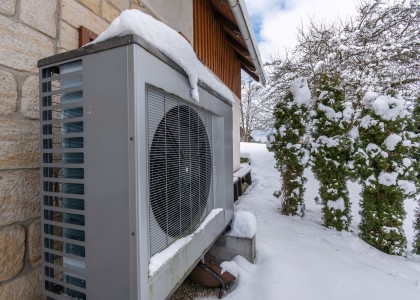California has long been an energy efficiency leader, topping ACEEE’s State Energy Efficiency Scorecard from 2006–2010 and ranking #2 since then. But like many states, California would much prefer to be #1 and has been upping its game, achieving a “most improved” grade in our 2015 Scorecard and trailing the #1 state by only half a point.
California’s desire to be a leader is also exemplified by two pieces of recently enacted legislation. The first, SB 350, calls on the California Energy Commission (CEC), the California Public Utilities Commission (CPUC), and publicly owned utilities to work together to double cumulative energy efficiency savings achieved by 2030. The second, AB 802, promotes building benchmarking, enables access to whole building data for owners of commercial and multi-family buildings above a certain size, and also calls on the utilities and the CPUC to implement programs to improve the efficiency of existing buildings.
As a result of these bills, the CEC and CPUC will be holding proceedings to figure out the implementation details, as both bills provide only high-level direction. In our view, these proceedings can be an opportunity for California to streamline some of its procedures so that there is more focus on achieving goals and encouraging innovation, and less focus on process and micro-managing details. California has been much more particular than other states in trying to specifically attribute energy savings to specific actions and for assuming that all existing buildings will eventually meet the building code and therefore only savings beyond the building code count. There has also been a reluctance to count savings from improved building operations.
Unfortunately, the effect of these actions is that it reduces the ambitions of many existing programs and the ability to go after some significant savings opportunities. For example, existing buildings may be upgraded to code during major renovations, but it may be 50 years or more before a substantial majority of buildings are upgraded. In the meantime, large amounts of energy are being wasted.
The upcoming proceedings in California provide an opportunity to work past these issues, and enable California to tap into some additional savings that currently are out of reach. We have two high-level suggestions for California officials to consider:
1. Set strong goals and encourage cooperation without too much focus on attribution
California currently has substantial efficiency programs run by utilities, the state, local governments, local organizations, and regional consortia. Considerable effort is made to try to separate out the relative effects of these programs, giving utilities credit only for savings that can be specifically attributed to them. A better approach might be to set goals for the utilities based on the savings that can be documented for all of these programs, and thereby encourage the utilities to work closely with these other entities to achieve savings, rather than worrying about who gets credit for specific units of savings.
Evaluations should be conducted to determine savings according to new CPUC guidelines (discussed below), but there would no longer be a need to figure out how much credit goes to each program in the same market. If utility goals also include savings from non-utility programs and policies, their new goals should be higher than would be the case under the previous approach of basing utility goals on only customer-funded programs. These broader goals should be tied to the SB 350 goals. Qualitative process evaluations should still be conducted to get a sense of which specific efforts and services are making a substantial difference and which are not, so that programs can be refined and improved.
However, determining attribution is very difficult to do and subject to large bands of uncertainty and regulators should not spend significant state resources to determine attribution with statistical precision. Massachusetts and Rhode Island are now following this model of setting higher goals that include savings beyond just utility-run efforts and it has worked well. We have recommended a similar model in New York.
Furthermore, in setting goals, it is important to get cost-effectiveness rules right. California’s complicated rules place excessive constraints on what is cost-effective. For example, California uses a version of the total resources cost test (TRC) that considers all program-related and participant costs but only energy-saving benefits, largely ignoring the multiple benefits these measures achieve beyond saving energy. Either only utility costs and benefits should be counted (an approach called the program administrator cost test) or a full TRC test should be used that counts all benefits (my colleague Marty Kushler has written on this issue). If cost-effectiveness tests are overly strict, significant savings opportunities will be left on the table.
2. Replace the current baseline for existing buildings with a simple and fair system
Under AB 802, the CPUC is directed to find a new baseline for evaluating energy savings from existing residential and commercial buildings. Research in California has found that the majority of savings in existing buildings are to improve these buildings so they reach current code levels, and opportunities for beyond-code savings in existing buildings are less than 25% of the available cost-effective savings. AB 802 essentially endorses this finding and the CPUC will be deciding on new baselines. We recommend that they keep things simple but fair. For replacement of pieces of equipment, a “common practice baseline” approach can be used, as is used in the Northwest and has been proposed by EPA for evaluation of energy savings under the Clean Power Plan (others have called this a dynamic baseline).
For example, the common practice baseline for a measure could be defined to be the average efficiency of products in the market. For more complicated multi-measure retrofits, the existing building can be used as a baseline, and an adjustment factor developed from historic data to subtract savings from naturally occurring efficiency savings (or add additional savings if the baseline is increasing).
Of course, the real world is complicated and details will be important. For example, for early replacement of equipment, simple procedures should be established so that credit is given for savings relative to current equipment efficiency until the end of the average useful life of the current equipment and then a common practice baseline applied for subsequent savings. Likewise, for retrofits, estimates of naturally-occurring efficiency should not include historic savings from efficiency programs. California has recently established the California Technical Forum, a group of experts with technical and evaluation expertise. This would be an excellent place to work out these details.
What’s fair to all?
Ultimately, decisions in California (and other states) are made based on what’s fair and reasonable for all parties. In particular, regulators want to make sure costs to customers are fair. Removing some of the constraints on energy efficiency will reduce customer bills, as customer consumption goes down (due to efficiency) and costs of power are reduced because energy efficiency generally costs less per kWh than investing in new generation. Reducing the need for grid upgrades can also reduce costs.
In California, and many other states, utility shareholders receive incentives for achieving energy-saving targets. What we propose here are higher targets and more ways to achieve them. If these changes are made, shareholder incentives may need to be recalibrated so they provide a reasonable incentive for shareholders and a fair cost to customers. Experiences in other states can enlighten this process, building on what has worked well and avoiding what has not.
Conclusion
The new laws in California will spur efforts to take efficiency efforts to a higher level. They can also be an opportunity to clear out some of the brush and establish simple but fair procedures so that programs can focus on California’s goal: doubling energy savings. Ultimately we hope that California regulators will improve their processes, perhaps using these ideas or perhaps finding something even better as a result of the proceedings they are about to start.




